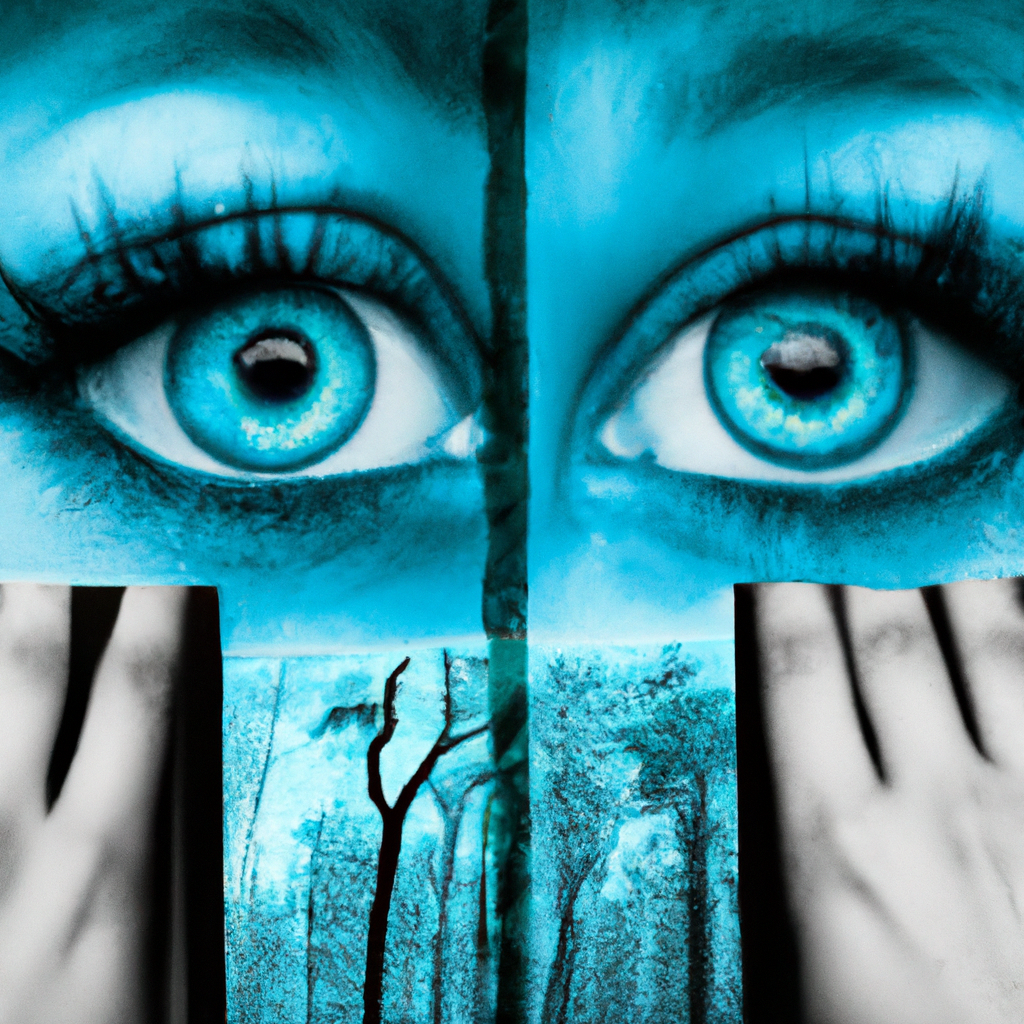Enter into the realm where reality blurs and dreams come alive, as we embark on a journey through the intricate world of Surrealism in Art. Like a key to the secrets of a boundless dreamscape, this artistic movement unlocks the depths of the mind, unveiling a realm where logic bends and imagination knows no bounds. Surrealism captivates us with its enigmatic brushstrokes and peculiar visual narratives, allowing us to question the very essence of reality and explore the untapped recesses of our subconscious. Join us as we venture deeper into this ethereal quest, unraveling the enigmas and hidden meanings that lie within the enchanting masterpieces crafted by Surrealist visionaries. Prepare to have your perception of the world turned upside-down and your imagination set free, for Surrealism dares to liberate the dormant realm of dreams and reshape the confines of the conscious mind.
1. Ascending into the Labyrinth of the Subconscious: Surrealism and its Enigmatic Origins
Surrealism, an artistic and literary movement that emerged in the early 20th century, remains one of the most captivating and perplexing phenomena to have ever graced the creative world. Its enigmatic origins have perpetuated a sense of mystery and wonder surrounding this fantastical art form. Deeply rooted in the psyche, surrealism delves into the labyrinth of the subconscious, exploring the recesses of the human mind.
Examining the evolution of surrealism unveils a rich tapestry of influences that have shaped its unique character. One cannot discuss surrealism without acknowledging the profound impact of Sigmund Freud’s psychoanalysis and his groundbreaking theories on dreams and the unconscious. The surrealists sought to liberate the mind from the shackles of reason, diving headlong into the unconscious, where reality and unreality intertwine, creating a kaleidoscope of vivid and unsettling imagery.
Moreover, surrealism blended elements of Dadaism, an anti-establishment movement that rejected societal norms and celebrated absurdity. The absurd became the language of surrealism, as artists sought to disrupt conventional thought patterns and challenge the status quo. With their subversive use of symbolism, juxtaposition, and unexpected combinations, surrealists pushed the boundaries of artistic expression, offering a glimpse into the hidden realms of the subconscious.
Many surrealists found inspiration in their dreams and the automatic writing technique, where they would write down stream-of-consciousness thoughts without conscious censorship. This method allowed artists to tap into their innermost thoughts and desires, often uncovering buried traumas, fears, and desires lurking within. The resulting artwork was a visual translation of the inner workings of the mind, a surreal landscape that defied logic and celebrated the irrational.
In essence, surrealism beckons viewers on a journey, inviting them to suspend their disbelief and embrace the strange and the uncanny. From the mind of the artist to the depths of the viewer’s soul, surrealism creates a bridge between reality and dreams, challenging perceptions and evoking emotions that are both fascinating and unsettling. Embark on this wondrous voyage into the labyrinth of the subconscious, where the lines between the conscious and the unconscious blur, and where the absurd becomes sublime.

2. Brushing Aside Reality’s Veil: Surrealist Techniques and the Unleashing of Imagination
Surrealism, as an art movement, has captivated audiences for decades, transporting them into a realm where reality merges with the boundaries of imagination. Through a diverse range of techniques, surrealists have managed to brush aside the veil of reality, allowing their art to transcend conventional norms and challenge perceptions. This post section will explore some of the most prominent techniques employed by surrealists, shedding light on the mesmerizing journey they take us on.
Dreamscape: A Gateway to the Subconscious
One of the key tools surrealists utilize is tapping into the subconscious mind, with dreams acting as a gateway to a hidden world within us. By incorporating dream-like elements into their artwork, surrealists are able to unlock the depths of their own imagination and invite viewers to join them on this ethereal voyage. Pieces created through this technique often feature juxtapositions, distortions, and unexpected combinations that challenge the boundaries of reality.
Automatic Drawing: Spontaneous Expressions
Automatic drawing is a technique that surrealist artists use to bypass conscious thought and allow the subconscious to guide their hand. By entering a trance-like state and drawing with no preconceived notion or planning, spontaneous and unpredictable images emerge. These manifestations from the depths of the mind offer a raw and unfiltered glimpse into the artist’s imagination, connecting with the viewer on a primal and instinctive level.
Collage: An Artistic Jigsaw Puzzle
Surrealists often employ collage as a means to construct fantastical worlds. By piecing together seemingly unrelated images from different sources, a new reality is birthed. Collage allows surrealists the freedom to deconstruct and reconstruct elements of the physical world, creating visual surprises that challenge our perception of reality. The possibilities are endless in this artistic jigsaw puzzle, where recognizable objects morph into fascinating and whimsical forms.
Decalcomania: Unleashing Chaos and Chance
In the pursuit of surrealism, chaos and chance meet on the canvas through the technique of decalcomania. This process involves applying paint or ink to a surface and then pressing it against another surface to create unexpected and intricate patterns. Surrealists embrace the resulting chaos, allowing their imagination to perceive hidden meanings or fantastical landscapes within the abstract shapes. Such unprompted accidents lead to a visual journey that transports viewers to uncharted territories within the realm of imagination.
Object Substitution: Giving the Mundane a New Life
Through object substitution, surrealists take ordinary objects from our everyday world and give them new, often absurd, meanings. By replacing familiar elements with unexpected counterparts, these artists confront the viewer with an alternate reality, forcing us to question our ingrained perceptions. The mundane is infused with a magical quality, encouraging us to see beyond the surface and discover hidden narratives within the surreal arrangement.
3. Dali’s Melting Clocks and Beyond: Exploring Surrealist Art’s Symbolic Dreamscape
In the realm of art, the surrealist movement has long captivated audiences with its enigmatic and thought-provoking works. Amongst the many renowned surrealist artists, Salvador Dali stands as a prominent figure, known for his iconic melting clocks and thought-provoking symbolism.
Dali’s melting clocks, most famously depicted in his painting “The Persistence of Memory,” have become a symbol of the surrealist movement and its exploration of the unconscious mind. The surrealists sought to challenge conventional perception and delve into the realm of dreams, fantasies, and the subconscious. Through his melting clocks, Dali sought to symbolize the fluidity of time and the irrational nature of existence.
Beyond Dali’s melting clocks, surrealism embraces a rich and diverse dreamscape of symbolism. Surrealist artists often incorporated unconventional juxtapositions, striking visual imagery, and unexpected transformations in their works. These elements aimed to disrupt logical connections and invite viewers to explore the depths of their own psyche.
One notable surrealist artist who delved into the symbolic dreamscape was René Magritte. His painting “The Son of Man,” with its iconic apple covering the face of the subject, challenges viewers to question the nature of identity and hidden truths. Magritte often employed ordinary objects in unusual contexts, creating a sense of intrigue and mystery.
- The surrealist movement also delved into the exploration of sexuality and desire. Artists like Salvador Dali and Max Ernst incorporated erotic and subconscious elements in their works, breaking societal norms and exploring the depths of human desire.
- Surrealism is not limited to the visual arts alone but extends to literature, film, and even fashion. Writers like André Breton and filmmakers like Luis Buñuel embraced surrealist concepts to create captivating and unconventional narratives.
Exploring surrealism allows us to embrace the complexities of the human mind, challenging us to question our reality and discover the hidden connections that lie within our own dreams and desires. Through the melting clocks of Dali and the symbolic dreamscape of surrealism, we are invited to unlock the mysteries of our own subconscious and explore the boundaries of our imagination.
4. Surrealism in the Contemporary Era: A Reimagining of Reality and the Power of the Unconscious
****
The contemporary era has witnessed a vibrant resurgence of surrealism, an artistic movement that originated in the early 20th century, captivating minds with its enigmatic imagery and profound exploration of the human psyche. Surrealism in the present day has evolved beyond its historical roots, continuing to challenge conventional boundaries and allowing artists to delve deeper into the realm of the subconscious mind.
Today, surrealism serves as a powerful tool for artists to reimagine reality and push the limits of imagination. It invites viewers to question their understanding of the world, straying away from the conventional norms and embracing the bizarre. Through a combination of dreamlike imagery, unexpected juxtapositions, and symbols, contemporary surrealism creates a rich tapestry of visual experiences that elicit strong emotional responses.
In the contemporary era, surrealism has become a means for artists to explore the hidden recesses of the unconscious mind. By tapping into their deepest thoughts, desires, and fears, artists unlock a realm of unlimited creativity. Their artworks become windows into a parallel universe, where the tangible and intangible coexist, blurring the line between reality and fantasy.
The power of the unconscious mind is harnessed within contemporary surrealism, as artists channel their innermost thoughts, dreams, and anxieties onto the canvas. The resulting artworks often provoke profound introspection and offer a unique perspective on the human condition. Surrealism has the ability to challenge societal norms, question established beliefs, and ignite conversations about the mysteries of the human experience.
In the contemporary era, surrealism continues to captivate and inspire, pushing the boundaries of artistic expression. Through its reimagination of reality and exploration of the hidden depths of the subconscious, it serves as a testament to the enduring power of the human imagination. Surrealism invites us to embrace the unconventional, challenge the status quo, and embark on a journey of self-discovery through the swirling landscapes of our own minds.
Surrealism is a concept that has pushed the boundaries of art since it began. Each unique expression of dreamlike landscapes opens a portal into the depths of the imagination, an ever-flowing stream revealing the depth of our creative minds. With surrealism, the dreamscape of the mind is placed at our fingertips, ready to be explored!




